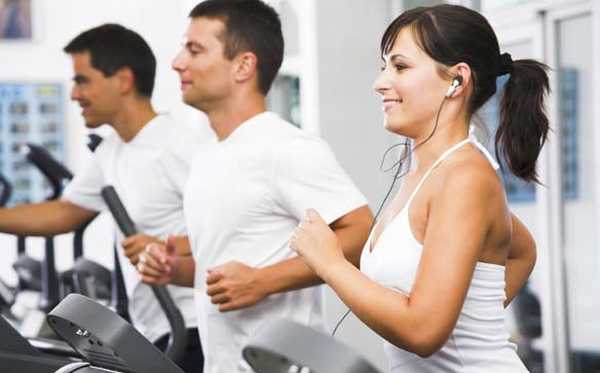EVENTS
Life Style :


If you’re lucky enough to be in a situation where you work from your own home – you’ve no doubt experienced mostly good things, but also seen a few negative aspects. While I’m no expert at running a home office, I do have some experience both in my current job and in the past when I ran my own business from my home.
To get the most out of the situation, you need to do a few things. Specifically…
1. Create a schedule that you abide by. This means getting up at the same time each day, doing certain things at certain times, and basically living by a routine. It will be a form of structure that will help you be productive.
2. Take breaks at specific times. You need to get out of your chair and do something different at least every two or three hours. Why? One reason is because home workers tend to overwork – and you need to break up your day so your mind doesn’t get burned out.
3. Work out. Yes, you need to do this. If not, you’ll gain weight and have less energy. I have a punching bag (a heavy bag), a weight bench, and some dumbbells. I regularly work out on the heavy bag, and usually do some weight lifting as well. Sometimes I jog in the afternoon during lunch (just a half mile). When I get back, I feel good about myself and my mind always feels more sharp and alive. I rarely see anyone else jogging at that time of day – and I always think of how fortunate I am that I’m not stuck in an office somewhere.
4. Eat healthy snacks. Yes, I am serious about maintaining health – it’s important! So you need to keep some good things at home to snack on. One thing I would suggest is green tea. If you can find it, get the kind with ginseng – it is beneficial for your brain as opposed to loading up on caffeine all day. Also, have dried fruit, nuts, and chopped up celery and carrots. You can eat those and feel full…and not feel greasy afterwards. Healthy snack will give you energy and help you do better work.
5. Quit when its time to quit. Don’t overwork yourself, or you’ll end up being less effective in the end. Stop when it’s time, and make a list of what needs to get done for the next day. You’ll have the list waiting for you in the morning, and you can forget about what needs to get done until then.
To get the most out of the situation, you need to do a few things. Specifically…
1. Create a schedule that you abide by. This means getting up at the same time each day, doing certain things at certain times, and basically living by a routine. It will be a form of structure that will help you be productive.
2. Take breaks at specific times. You need to get out of your chair and do something different at least every two or three hours. Why? One reason is because home workers tend to overwork – and you need to break up your day so your mind doesn’t get burned out.
3. Work out. Yes, you need to do this. If not, you’ll gain weight and have less energy. I have a punching bag (a heavy bag), a weight bench, and some dumbbells. I regularly work out on the heavy bag, and usually do some weight lifting as well. Sometimes I jog in the afternoon during lunch (just a half mile). When I get back, I feel good about myself and my mind always feels more sharp and alive. I rarely see anyone else jogging at that time of day – and I always think of how fortunate I am that I’m not stuck in an office somewhere.
4. Eat healthy snacks. Yes, I am serious about maintaining health – it’s important! So you need to keep some good things at home to snack on. One thing I would suggest is green tea. If you can find it, get the kind with ginseng – it is beneficial for your brain as opposed to loading up on caffeine all day. Also, have dried fruit, nuts, and chopped up celery and carrots. You can eat those and feel full…and not feel greasy afterwards. Healthy snack will give you energy and help you do better work.
5. Quit when its time to quit. Don’t overwork yourself, or you’ll end up being less effective in the end. Stop when it’s time, and make a list of what needs to get done for the next day. You’ll have the list waiting for you in the morning, and you can forget about what needs to get done until then.
Working From Home? Here Are Some Tips on How to Get the Most Out of It
When it comes to vitamins, it appears you could have too much of a good thing, say researchers who report a link between their use and higher death rates among older women.
Experts have suspected for some time that supplements may only be beneficial if a person is deficient in a nutrient.
And excess may even harm, as the study in Archives of Internal Medicine finds.
All of the women, in their 50s and 60s, were generally well nourished yet many had decided to take supplements.
Multivitamins, folic acid, vitamin B6, magnesium, zinc, copper and iron in particular appeared to increase mortality risk.
The researchers believe consumers are buying supplements with no evidence that they will provide any benefit.
They are quick to stress that their study relied on the 38,000 US women who took part in it recalling what vitamins and minerals they had taken over the previous two decades.
And it is difficult to control for all other factors, like general physical health, that might have influenced the findings.
But they say their findings suggest that supplements should only be used if there is a strong medically based cause for doing so because of the potential to cause harm.
"Based on existing evidence, we see little justification for the general and widespread use of dietary supplements," Dr Jaakko Mursu of the University of Eastern Finland and his research colleagues said.
In the study, iron tablets were strongly linked with a small (2.4%) increased death risk, as were many other supplements. The link with iron was dose-dependent, meaning the more of it the individual took, the higher their risk was.
Conversely, calcium supplements appeared to reduce death risk. However, the researchers say this finding needs more investigation and they do not recommend that people take calcium unless advised to by a doctor in order to treat a deficiency.
Drs Christian Gluud and Goran Bjelakovic, who review research for the Cochrane Database of Systematic Reviews to evaluate best evidence, said: "We think the paradigm `the more the better` is wrong."
They say dietary supplementation has shifted from preventing deficiency to trying to promote wellness and prevent diseases, and caution: "We believe that for all micronutrients, risks are associated with insufficient and too-large intake."
Helen Bond of the British Dietetic Association said some people, like the elderly, might need to take certain supplements. For example, vitamin D is recommended for people over the age of 65.
But she said that generally, people should be able to get all the vitamins and minerals they needed from a healthy, balanced diet.
She said some took supplements as an insurance policy, wrongly assuming that they could do no harm. "But too much can be toxic and it is easy to inadvertently take more than the recommended daily amount."
Experts have suspected for some time that supplements may only be beneficial if a person is deficient in a nutrient.
And excess may even harm, as the study in Archives of Internal Medicine finds.
All of the women, in their 50s and 60s, were generally well nourished yet many had decided to take supplements.
Multivitamins, folic acid, vitamin B6, magnesium, zinc, copper and iron in particular appeared to increase mortality risk.
The researchers believe consumers are buying supplements with no evidence that they will provide any benefit.
They are quick to stress that their study relied on the 38,000 US women who took part in it recalling what vitamins and minerals they had taken over the previous two decades.
And it is difficult to control for all other factors, like general physical health, that might have influenced the findings.
But they say their findings suggest that supplements should only be used if there is a strong medically based cause for doing so because of the potential to cause harm.
"Based on existing evidence, we see little justification for the general and widespread use of dietary supplements," Dr Jaakko Mursu of the University of Eastern Finland and his research colleagues said.
In the study, iron tablets were strongly linked with a small (2.4%) increased death risk, as were many other supplements. The link with iron was dose-dependent, meaning the more of it the individual took, the higher their risk was.
Conversely, calcium supplements appeared to reduce death risk. However, the researchers say this finding needs more investigation and they do not recommend that people take calcium unless advised to by a doctor in order to treat a deficiency.
Drs Christian Gluud and Goran Bjelakovic, who review research for the Cochrane Database of Systematic Reviews to evaluate best evidence, said: "We think the paradigm `the more the better` is wrong."
They say dietary supplementation has shifted from preventing deficiency to trying to promote wellness and prevent diseases, and caution: "We believe that for all micronutrients, risks are associated with insufficient and too-large intake."
Helen Bond of the British Dietetic Association said some people, like the elderly, might need to take certain supplements. For example, vitamin D is recommended for people over the age of 65.
But she said that generally, people should be able to get all the vitamins and minerals they needed from a healthy, balanced diet.
She said some took supplements as an insurance policy, wrongly assuming that they could do no harm. "But too much can be toxic and it is easy to inadvertently take more than the recommended daily amount."
Vitamins linked with higher death risk in older women
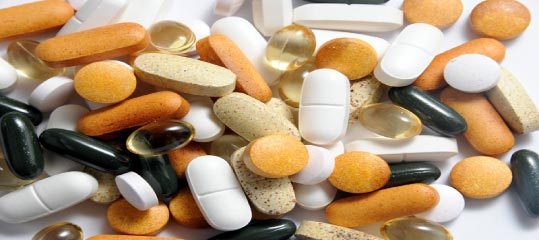
Germs and bacteria can be easily transferred from your toothbrush to your mouth. An improperly stored toothbrush can very well turn into a storehouse of diseases. In order to ward off illnesses you need to keep your toothbrush in spick-and-span condition. You don`t need to buy a fancy sterilization machine to remove pesky bacteria. Follow these simple steps to clean your toothbrush.
1. Never leave your toothbrushes in a horizontal position after you are done brushing. Keep it standing so that water can easily drain off. Also moisture from the bristles of the brush can easily evaporate when the brush is left standing. Place your brush in one of the holders especially meant for storing toothbrushes. Also ensure that your toothbrush doesn`t touch other people`s brushes.
2. OK we agree that everyone`s not a morning person and it is quite possible to give your toothbrush a feeble rinse while your head`s still groggy with sleep. But it would do you a world of good to hold your brush under running water at least for a minute or two. Rinse with a strong mouthwash later. But make sure you rinse out the mouthwash thoroughly to remove the residue left behind by the mouthwash.
3. Douse your toothbrush in boiling water. Although this method will weaken the bristles eventually, it is very effective in killing germs thoroughly. Use this method once a week to minimise damage.
4. Soak you brush in a bowl filled with vinegar for a few minutes and then rinse off with very hot water. Be careful not to scald your hands.
1. Never leave your toothbrushes in a horizontal position after you are done brushing. Keep it standing so that water can easily drain off. Also moisture from the bristles of the brush can easily evaporate when the brush is left standing. Place your brush in one of the holders especially meant for storing toothbrushes. Also ensure that your toothbrush doesn`t touch other people`s brushes.
2. OK we agree that everyone`s not a morning person and it is quite possible to give your toothbrush a feeble rinse while your head`s still groggy with sleep. But it would do you a world of good to hold your brush under running water at least for a minute or two. Rinse with a strong mouthwash later. But make sure you rinse out the mouthwash thoroughly to remove the residue left behind by the mouthwash.
3. Douse your toothbrush in boiling water. Although this method will weaken the bristles eventually, it is very effective in killing germs thoroughly. Use this method once a week to minimise damage.
4. Soak you brush in a bowl filled with vinegar for a few minutes and then rinse off with very hot water. Be careful not to scald your hands.
You must know about the relation between brush & tooth
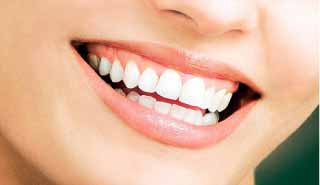
over the past few years, you`d think the stuff was some kind of all-powerful magical elixir. Improving heart health, reducing cancer risk, warding off dementia and diabetes—there`s barely a health benefit that hasn`t been credited to tea.
It`s true that the brew has disease-fighting antioxidants, and, as far as anyone can tell, should be great for us. "The science is certainly promising," says David L. Katz, M.D., director of Yale University`s Prevention Research Center. "But the hype goes beyond it and tends to make promises which the science can`t yet deliver." (No, tea probably will not cure depression, eliminate allergies, or boost your fertility!) We talked to the experts and weighed the studies to separate the truth from the hype.
Why tea is so hot
First, a definition: When scientists talk about tea, they mean black, green, white, or oolong teas—all of which are made from the leaves of the Camellia sinensis plant. Herbal brews, like chamomile and peppermint, are not technically considered tea; they`re infusions of other plants with different nutritional characteristics. If you`re not sure what kind you`re drinking, check the ingredients for the word "tea."
What makes the four tea types different from each other is the way the leaves are prepared and how mature they are, which affects both flavor and nutritional content. Black tea is made from leaves that have been wilted (dried out) and then fully oxidized (meaning that chemicals in the leaves are modified through exposure to air). Green tea`s leaves are wilted but not oxidized. Oolong tea is wilted and then only partially oxidized, and white tea is not wilted or oxidized at all.
All four types are high in polyphenols, a type of antioxidant that seems to protect cells from the DNA damage that can cause cancer and other diseases. It`s the polyphenols that have made tea the star of so many studies, as researchers try to figure out whether all that chemical potential translates into real disease-fighting punch.
Most research has focused on black tea, which is what about 75% of the world drinks, and green tea, the most commonly consumed variety in China and Japan. Green tea contains an especially high amount of antioxidants—in particular, a type of polyphenol called a catechin, the most active and abundant of which is epigallocatechin-3-gallate (EGCG). That`s why there are five times more studies on green than black tea each year—and likely why you`re always hearing about the power of the green stuff, says Diane L. McKay, Ph.D., assistant professor of nutrition at the Tufts University Friedman School of Nutrition Science and Policy.
It`s true that the brew has disease-fighting antioxidants, and, as far as anyone can tell, should be great for us. "The science is certainly promising," says David L. Katz, M.D., director of Yale University`s Prevention Research Center. "But the hype goes beyond it and tends to make promises which the science can`t yet deliver." (No, tea probably will not cure depression, eliminate allergies, or boost your fertility!) We talked to the experts and weighed the studies to separate the truth from the hype.
Why tea is so hot
First, a definition: When scientists talk about tea, they mean black, green, white, or oolong teas—all of which are made from the leaves of the Camellia sinensis plant. Herbal brews, like chamomile and peppermint, are not technically considered tea; they`re infusions of other plants with different nutritional characteristics. If you`re not sure what kind you`re drinking, check the ingredients for the word "tea."
What makes the four tea types different from each other is the way the leaves are prepared and how mature they are, which affects both flavor and nutritional content. Black tea is made from leaves that have been wilted (dried out) and then fully oxidized (meaning that chemicals in the leaves are modified through exposure to air). Green tea`s leaves are wilted but not oxidized. Oolong tea is wilted and then only partially oxidized, and white tea is not wilted or oxidized at all.
All four types are high in polyphenols, a type of antioxidant that seems to protect cells from the DNA damage that can cause cancer and other diseases. It`s the polyphenols that have made tea the star of so many studies, as researchers try to figure out whether all that chemical potential translates into real disease-fighting punch.
Most research has focused on black tea, which is what about 75% of the world drinks, and green tea, the most commonly consumed variety in China and Japan. Green tea contains an especially high amount of antioxidants—in particular, a type of polyphenol called a catechin, the most active and abundant of which is epigallocatechin-3-gallate (EGCG). That`s why there are five times more studies on green than black tea each year—and likely why you`re always hearing about the power of the green stuff, says Diane L. McKay, Ph.D., assistant professor of nutrition at the Tufts University Friedman School of Nutrition Science and Policy.
Do we know about tea
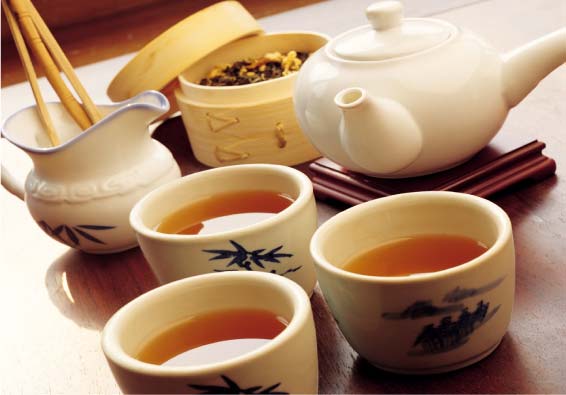
The risk mobiles present has been much debated over the past 20 years as use of the phones has soared.
The latest study led by the Institute of Cancer Epidemiology in Denmark looked at more than 350,000 people with mobile phones over an 18-year period.
Researchers concluded users were at no greater risk than anyone else of developing brain cancer.
The findings, published on the British Medical Journal website, come after a series of studies have come to similar conclusions.
But there has also been some research casting doubt on mobile phone safety, prompting the World Health Organization to warn that they could still be carcinogenic.
In doing so, the WHO put mobile phones in the same category as coffee, meaning a link could not be ruled out but could not be proved either.
The Department of Health continue to advise that anyone under the age of 16 should use mobile phones only for essential purposes and keep all calls short.
The Danish study, which built on previous research that has already been published by carrying out a longer follow-up, found there was no significant difference in rates of brain or central nervous system cancers among those who had mobiles and those that did not.
Of the 358,403 mobile phone owners looked at, 356 gliomas (a type of brain cancer) and 846 cancers of the central nervous system were seen - both in line with incidence rates among those who did not own a mobile.
Even among those who had had mobiles the longest - 13 years or more - the risk was no higher, the researchers concluded.
But they still said mobile phone use warranted continued follow up to ensure cancers were not developing over the longer term, and to see what the effect was in children.
Hazel Nunn, head of evidence and health information at Cancer Research UK, said: "These results are the strongest evidence yet that using a mobile phone does not seem to increase the risk of cancers of the brain or central nervous system in adults."
Prof Anders Ahlbom, from Sweden`s Karolinska Institute, praised the way the study was conducted, adding the findings were "reassuring".
Prof David Spiegelhalter, an expert specialising in the understanding of risk who is based at the University of Cambridge, said: "The mobile phone records only go up to 1995 and so the comparison is mainly between early and late adopters, but the lack of any effect on brain tumours is still very important evidence."
And Prof Malcolm Sperrin, director of medical physics at Royal Berkshire Hospital, said: "The findings clearly reveal that there is no additional overall risk of developing a cancer in the brain although there does seem to be some minor, and not statistically significant, variations in the type of cancer."
But the researchers themselves do accept there were some limitations to the study, including the exclusion of "corporate subscriptions", thereby excluding people who used their phones for business purposes, who could be among the heaviest users.
The latest study led by the Institute of Cancer Epidemiology in Denmark looked at more than 350,000 people with mobile phones over an 18-year period.
Researchers concluded users were at no greater risk than anyone else of developing brain cancer.
The findings, published on the British Medical Journal website, come after a series of studies have come to similar conclusions.
But there has also been some research casting doubt on mobile phone safety, prompting the World Health Organization to warn that they could still be carcinogenic.
In doing so, the WHO put mobile phones in the same category as coffee, meaning a link could not be ruled out but could not be proved either.
The Department of Health continue to advise that anyone under the age of 16 should use mobile phones only for essential purposes and keep all calls short.
The Danish study, which built on previous research that has already been published by carrying out a longer follow-up, found there was no significant difference in rates of brain or central nervous system cancers among those who had mobiles and those that did not.
Of the 358,403 mobile phone owners looked at, 356 gliomas (a type of brain cancer) and 846 cancers of the central nervous system were seen - both in line with incidence rates among those who did not own a mobile.
Even among those who had had mobiles the longest - 13 years or more - the risk was no higher, the researchers concluded.
But they still said mobile phone use warranted continued follow up to ensure cancers were not developing over the longer term, and to see what the effect was in children.
Hazel Nunn, head of evidence and health information at Cancer Research UK, said: "These results are the strongest evidence yet that using a mobile phone does not seem to increase the risk of cancers of the brain or central nervous system in adults."
Prof Anders Ahlbom, from Sweden`s Karolinska Institute, praised the way the study was conducted, adding the findings were "reassuring".
Prof David Spiegelhalter, an expert specialising in the understanding of risk who is based at the University of Cambridge, said: "The mobile phone records only go up to 1995 and so the comparison is mainly between early and late adopters, but the lack of any effect on brain tumours is still very important evidence."
And Prof Malcolm Sperrin, director of medical physics at Royal Berkshire Hospital, said: "The findings clearly reveal that there is no additional overall risk of developing a cancer in the brain although there does seem to be some minor, and not statistically significant, variations in the type of cancer."
But the researchers themselves do accept there were some limitations to the study, including the exclusion of "corporate subscriptions", thereby excluding people who used their phones for business purposes, who could be among the heaviest users.
Brain cancer from Mobile phone
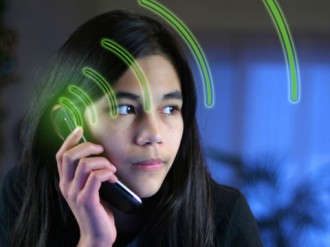
There is no alternative of physical activity and exercise. It can make a positive impact on your body and whole life like nothing else can. There is no debate on that point due to decades of research and clinical experience. If you are able to do some kind of increased activity, then it is worth doing simply because it will have a positive effect. The advantages of exercise are both physical and emotional. You can’t even use the excuse of being too old to exercise anymore. Exercise helps people at any age, as recent studies have shown. If you’re looking for more reasons to get more physical activity and exercise, read on, as we’ll be looking at some of them.
Most of the people have never heard of it. Soft flabby muscles burn fewer calories than those that are toned and strong. When your muscles are firmed-up, they will become more compact, dense, and larger than the opposite condition. This makes your body a calorie burning machine even when in a state of rest. Men are able to lose fat more easily than women because of this muscle mass. Exercising regularly can aid you in developing a better self image. This happens because you are able to shed pounds and appreciate your reflection in the mirror. Yes, all of that will make you feel so much better about yourself, and it will improve your self esteem. Other areas of your life will also improve as your new feelings of self worth spread.
When you add solid nutrition to your fitness efforts, you will really have a winning combination. This is how athletes and exercise gurus build up their fitness to truly impressive levels. If you had a high end race car, you’d be careful what you’d put into it. If you want to energize your body to the maximum degree, you have to give it the right mix of working out, sleep and high quality nutrition.
There are so many types of physical activity and exercise that are possible, almost everyone can find something that’s suitable. Many people complain about lack of time, but you can get a lot done in even ten to twenty minutes. Doing this three times per week is all you need, and you should be able to manage this. You have to ask yourself if it’s worth a few minutes per day to feel better and reduce the risk of health problems. The fact is, any amount of exercise is better than none, so do as much as you can. If you aren’t sure that you should begin exercising for any medical reason, see your doctor for advice.
Most of the people have never heard of it. Soft flabby muscles burn fewer calories than those that are toned and strong. When your muscles are firmed-up, they will become more compact, dense, and larger than the opposite condition. This makes your body a calorie burning machine even when in a state of rest. Men are able to lose fat more easily than women because of this muscle mass. Exercising regularly can aid you in developing a better self image. This happens because you are able to shed pounds and appreciate your reflection in the mirror. Yes, all of that will make you feel so much better about yourself, and it will improve your self esteem. Other areas of your life will also improve as your new feelings of self worth spread.
When you add solid nutrition to your fitness efforts, you will really have a winning combination. This is how athletes and exercise gurus build up their fitness to truly impressive levels. If you had a high end race car, you’d be careful what you’d put into it. If you want to energize your body to the maximum degree, you have to give it the right mix of working out, sleep and high quality nutrition.
There are so many types of physical activity and exercise that are possible, almost everyone can find something that’s suitable. Many people complain about lack of time, but you can get a lot done in even ten to twenty minutes. Doing this three times per week is all you need, and you should be able to manage this. You have to ask yourself if it’s worth a few minutes per day to feel better and reduce the risk of health problems. The fact is, any amount of exercise is better than none, so do as much as you can. If you aren’t sure that you should begin exercising for any medical reason, see your doctor for advice.
Physical activity and exercise
